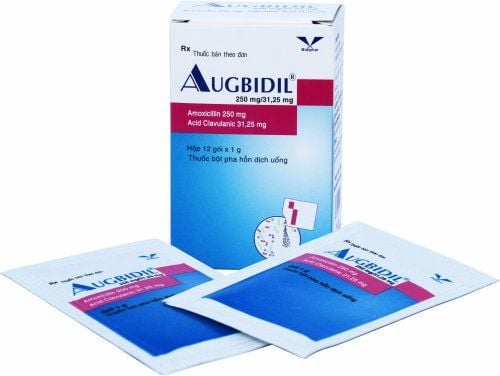This is an automatically translated article.
Cefaclor Stada 500 is an antibiotic with the main ingredient cefaclor used to treat respiratory and urinary tract infections, especially after the failure of conventional antibiotics. Refer to the article below for more useful information about the drug Cefaclor.
1. What is Cefaclor 500?
Cefaclor is an oral, semi-synthetic, 2nd generation cephalosporin antibiotic that kills growing and dividing bacteria by inhibiting bacterial cell wall synthesis.
Cefaclor is active against gram-positive cocci similar to cephalothin, but is more active against gram-negative bacteria, especially Haemophilus influenzae and Moraxella catarrhalis, even against H. influenzae and M. catarrhalis produced beta-lactamases.
2. What effect does Cefaclor have?
Acute otitis media, acute sinusitis, pharyngitis, recurrent tonsillitis. Uncomplicated lower urinary tract infections (cystitis). Skin and soft tissue infections caused by susceptible Staphylococcus aureus and Streptococcus pyogenes: dermatitis, wound infections, cellulitis, boils. Upper and lower respiratory tract infections such as pneumonia, bronchitis. Skin and soft tissue infections such as gonococcal urethritis. On the other hand, the drug is not allowed to be prescribed in cases of hypersensitivity to Cephalosporin antibiotics.
3. Dosage and how to use Cefaclor Stada 500mg
Cefaclor is taken orally, taken on an empty stomach. Dosage of the drug will depend on the purpose of treatment of the disease:
Pharyngitis, bronchitis, tonsillitis, skin and soft tissue infections, lower urinary tract infections: Take 500mg x 2 times/day. For more severe infections, the dose is 500mg x 3 times/day. Limit dose usually prescribed for adults: Up to 4g/day. Cefaclor can be used in patients with renal failure. In case of severe renal impairment, the adult dose should be adjusted as follows: If creatinine clearance 10–50 ml/min, use 50% of the usual dose; If creatinine clearance is less than 10 ml/min, use 25% of the usual dose. Patients requiring hemodialysis: Initial dose is 250-1000mg before hemodialysis and maintenance dose is 500mg every 6-8 hours, in between dialysis sessions.
4. Side effects of Cefaclor Stada 500mg
During the use of the drug, patients may experience some side effects such as:
Common: Eosinophilia, diarrhea, measles-like skin rash. Uncommon: Lymphocytosis, leukopenia, neutropenia; Nausea, vomiting; Itching, hives; Genital itching, vaginitis, candidiasis. Rare: Stevens-Johnson syndrome, toxic epidermal necrolysis (Lyell's syndrome), generalized pustular rash, anaphylactic reaction, fever, inflammation or arthralgia, fever or not, may be associated with lymphadenopathy , proteinuria, hemolytic anemia; Pseudomembranous colitis.
5. Precautions when using Cefaclor Stada 500mg
Use caution when administering the drug to patients with a history of hypersensitivity to cephalosporins, especially to cefaclor, or to penicillins, or to other drugs. Caution should be exercised in patients allergic to penicillin because of cross-sensitization. Long-term use of cefaclor can cause pseudomembranous colitis. Caution should be exercised in patients with a history of the gastrointestinal tract, especially colitis. Cefaclor should be used with caution in patients with severely impaired renal function. Coombs test (+) during Cefaclor treatment. (hemolytic anemia) Determination of urinary glucose (sugar in the urine) with reducing agents may be false positive. Use caution when driving or operating machinery because it can cause dizziness, hallucinations and drowsiness. Cefaclor is indicated for use in pregnancy only when clearly needed. Cefaclor concentrations in breast milk are very low. The effect of the drug on the nursing infant is unknown, but attention should be paid to diarrhea, thrush and rash.
6. Drug Interactions Cefaclor Stada 500mg
Concomitant use of cefaclor and warfarin (a prophylactic drug for deep vein thrombosis) may increase prothrombin time, causing bleeding or clinical non-bleeding (rarely). Prothrombin time should be regularly monitored and dose adjusted if necessary. Probenecid (drug that increases the excretion of uric acid in the urine) increases the concentration of cefaclor in the serum. Concomitant administration of cefaclor with aminoglycoside antibiotics or furosemide diuretics increases nephrotoxicity.
Please dial HOTLINE for more information or register for an appointment HERE. Download MyVinmec app to make appointments faster and to manage your bookings easily.













